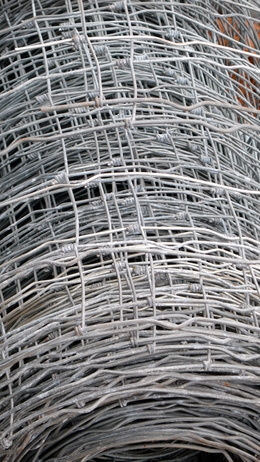
Although most modern HHO generators (hydrogen-hydrogen-oxygen generators, a.k.a. "hydrogen booster cells") use steel plates to transfer electricity, the first actually utilized spirals of mesh screen. Mesh screen generators can produce more gas per minute than equivalent plate systems, but they do have their drawbacks in terms of power consumption and longevity.
HHO generators work by passing high-amperage current between two electrodes (one positive and the other negative) via an electrolyte such as hydrogen peroxide or water. The electricity causes the molecule to split, releasing hydrogen and oxygen gas. Engine vacuum siphons off the gas, and the engine burns it as a supplemental fuel. An HHO generator can only produce as much gas at it has water molecules to split. Screen systems are superior in this regard because they allow the gas to escape faster than plate systems.
Mesh systems are easy to make. To build a basic generator, you'll need two strips of stainless-steel mesh screen, about 8 inches high and at least 10 feet long, and a roll of 1/2-inch-wide by 1/8-thick nitrile rubber strip (which will serve to keep your mesh strips separated). Lay one of the mesh strips on the floor, and cut four lengths of rubber the same length as your mesh strips. Place one rubber strip at the top and bottom of your mesh, and two in the middle. Place the other mesh strip on top, and then carefully roll the mesh-rubber-mesh strip up like a roll of toilet paper. Keep it rolled up with four thick, nitrile rubber bands.
Once you connect one of your strips to a positive power source and the other to a negative, you'll have the basic guts of a mesh-type HHO generator. While you may be tempted to install the cell pack into a vertical water reservoir, don't do it; the nitrile rubber isolator strips will block the HHO bubbles, which defeats the purpose of a mesh assembly. The cell assembly will need to lie flat inside of a horizontal water tank (shaped like a small aquarium). Cap off the top of your "aquarium," install a rubber hose to siphon the gas away and connect that hose to the engine intake.
If you've done everything right and haven't crimped the mesh, then your new HHO generator should start making huge amounts of gas when connected to a power source. Bear in mind that those tiny mesh wires will be under a lot of stress in a highly corrosive environment and that the mesh openings are small and can easily get clogged by accrued water impurities such as calcium and rust. These factors make pure, deionized water a de riguer for use in a mesh cell.
The additional hydrogen produced by a mesh cell necessitates more electricity, so don't be too surprised when your cell consumes about 20 to 30 percent more amperage than an equivalent plate setup. While this may necessitate a higher amperage alternator, you can expect a concordant rise in fuel economy.